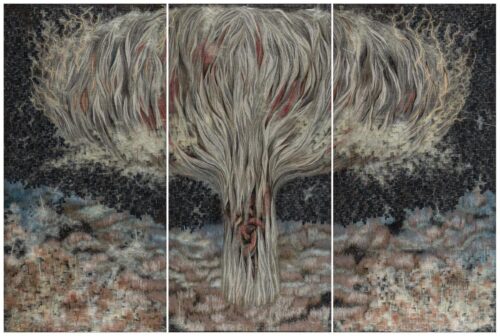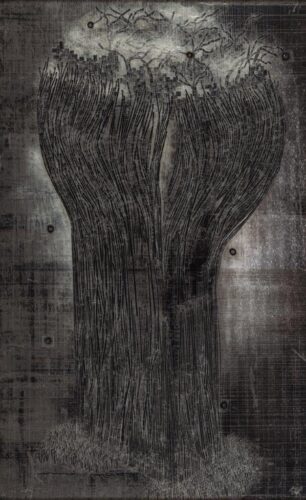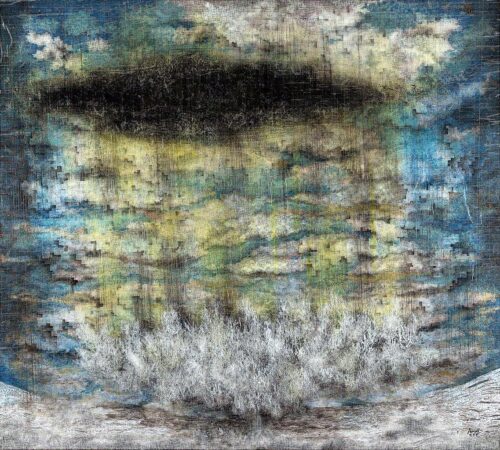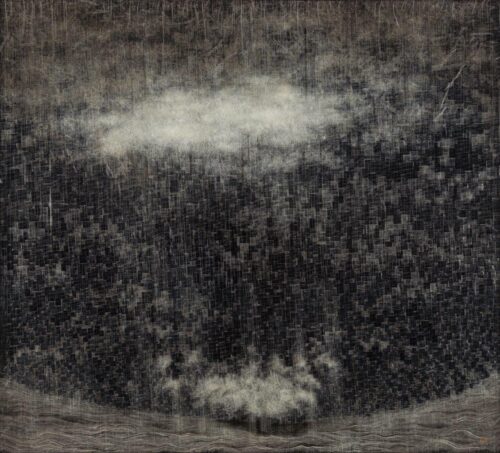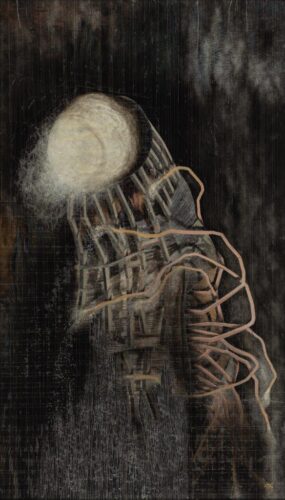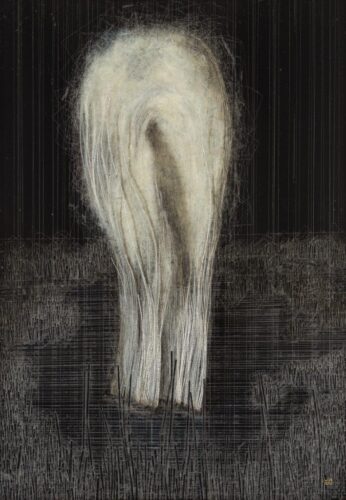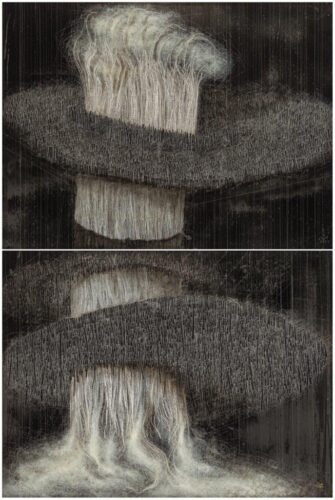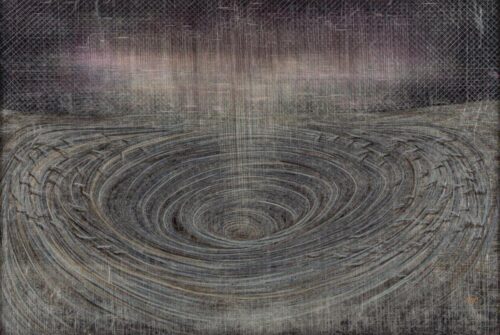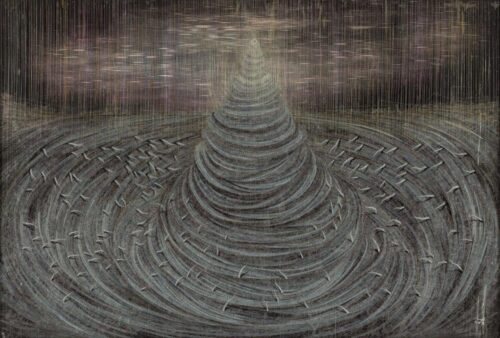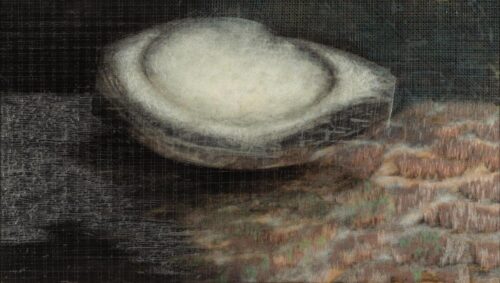Solo exhibition of Allahyar Najafi
Opening on 21st April 2023
On view until 12th May 2023
Sumerians called it Eridu, to which access was forbidden. The later interpretation of “Garden of Eden” is a reference to its inception and the absence of an end. Whatever we have and have known and all that we will have and know are between the two concepts we have created or remembered; beginning and end, life and death, Eternity without a beginning or an end, and Eden and absence.
All beings are placed on an axis whose beginning is Eden, and its end is absence, an axis that can be imagined as a circle where the outset and ending points are the same.
There is no beginning, end, up or down, inside or outside; a before and after cannot be imagined. It is a beat, a decline on one side while it rises from the other.
Isn’t clinging to symbols to understand the essence the result of failure in expression? In our common speech, we always arrive from particles to the whole, and language always refers us to details. And in Eden, details are important and visible. And in the same context, the first of Men and the first of Women, next to the first tree, each with their own characteristics, are signs that consist of many parts, somewhere between Eden and nothingness.
But this story is a mystery, an idea, a symbol, and the interpreter is the sign’s creator and determines its interpretation. The Tree of Knowledge is a sign, Adam is a symbol, and Eve is a mystery. Symbols are all that is and will be; they are timeless objects, and deciphering entails Time and its interpreters, each with its own decoder.
Ultimately, these and other topics were the main ideas and the basis of my interpretation of Eden/Absence.
The role of “Time” in completing this collection is perhaps a more obvious sign of my understanding of it as a kind of consumer material and the observable effect of the changing quality of Time on the collection. The accidentals and emphasis on their importance through repetition – to the point that it carries part of the burden of concept and technique – is nature’s unconscious effect, which is meaningless without the primary substance of Time.
And the technique used in the works may be explained by the saying that: what “is” does not arise from what “is not.”
Allahyar Najafi
